As we transition into Spring, a time of rebirth and change, we celebrate 13 great horror films about transformation — both physical and mental.
Each month, our staff picks a cinematic theme and recommends our favorite horror films related to that theme. This month, we honor the season of change marked by new growth, renewal, and new beginnings. In all cultural traditions, the world over, spring’s symbolism is recognized and celebrated. Christians just celebrated the resurrection of Easter, a word derived from Eostre, the Anglo-Saxon goddess of spring.
But perhaps nowhere is the concept of transformation and change more powerfully and effectively explored than in the realm of cinematic horror. Members of our writing team discuss their favorite transformative horror films, resulting in a list of 13 of the most influential genre films of the past 40 years.
1. GINGER SNAPS (2000)
Recommended by Jamie Alvey
To live life is to transform, to change and become anew. Not all changes are clean cut and deemed palatable by society. Puberty for cis women is often fraught with its own challenges and is often laden with blood, embarrassment and awkwardness. In the midst of it, you may learn you are not the person that you thought you once were.
The beauty and the carnage of the transition from girl to woman is depicted in a deliciously raw fashion in the 2000 film Ginger Snaps — a film that aligns female puberty with lycanthropy to create a harrowing allegory that the audience can feel in the marrow of their bones.
Sisters Ginger and Brigitte Fitzgerald live on the fringes of society. Their morbid and peculiar interests isolate them from their more vapid peers and make them targets for bullies. Looking to pay back one of their frequent tormentors leads to Ginger having a run in with the Beast of Bailey Downs that has been slaughtering the neighborhood dogs. Drawn by the smell of Ginger’s menarche, the Beast attacks her — and thus thrusts her into a whirl wind transformation that couples itself nascent puberty.
Caught in the eye of this storm is Brigitte, who goes through her own transformation alongside Ginger. Ginger’s descent into lycanthropy alienates her from Brigitte and thus fosters a newfound independence in Brigitte that she didn’t have prior. Brigitte throws herself wholeheartedly into a crusade to cure Ginger, while Ginger starts dating. At the same time, she’s dealing with horrific body changes, including growing a tail.
The sisters growing apart and coming at odds with one another when the two were originally inseparable is a point of friction in the narrative. As the film wears on, the sisters diverge and reach a veritable event horizon. Ginger becomes a person that Brigitte doesn’t recognize, and above all, does not like. However, Brigitte remains devoted to her sister and the idea that there might be a cure for her affliction. Jealousy, misunderstandings, and even murder ensue in the ill-fated path Ginger and Brigitte are careening down.
The film bursts at the seams with all the uncomfortable trappings of adolescence, including growing apart and differing from people that you love more than life. While Ginger’s transformation is overt, Brigitte’s is subtle, which correlates with each sisters’ inherent nature.
GINGER SNAPS is starkly emotional and often painful. Screenwriter Karen Walton expertly delineates the teenage female experience to the point the film strikes a nerve with the viewer. It’s a story that deserves multiple viewings and careful consideration. Actresses Katharine Isabelle and Emily Perkins are nothing short of perfect for their roles, wholly embodying the characters and the themes present.
There’s a reason that Ginger Snaps continues to be a beloved entry in the larger horror canon and essential feminist horror viewing. If you’ve yet to come across this Canadian gem, I suggest that you remedy that. If you’ve already seen it, let me give you an excuse to revisit it.
2. A DARK SONG (2016)
Recommended by Steven Fouchard
The transformation that takes place in A Dark Song won’t gross you out. It doesn’t even require special effects. In fact, it takes a most quotidian form: a good cry. And I’d still argue it’s the most powerful one on this list.
Writer-director Liam Gavin brings us into the sad world of Sophia (Catherine Walker), a grieving mother who has retreated into the Welsh countryside with veteran occultist Joseph Solomon (Steve Oram) to perform an epic magical work. The precise nature of her motives aren’t made entirely clear until that work is complete — and a heavy price will be paid for its completion.
Gavin’s near-flawless script offers an eye-opening look at magic that echoes the observation of Peter Bebergal in the invaluable tome Season of the Witch: How the Occult Saved Rock and Roll: that magic is not organized in the manner of religion into various schools of belief and ritual practice but rather a matter of individual will.
And Sophia’s will is powerful, surviving months of repetitive, intense physical and mental testing (not to mention Solomon’s oft-antagonistic presence) to achieve her desires, which prove to be far less selfish than would be expected of someone who has lost a child to foul play.
Exactly what she’s up to comes into focus just as the ritual grind pays dividends and forces just behind the veil of reality appear in a stunning reveal. And, as she departs the country manor where it’s all taken place, Sophia cries. Gavin has the good sense to lower the curtain before it’s revealed whether those tears are healing or a sign that she’s broken from having seen too much. But we know, for good or ill, she’s been transformed.
3. AN AMERICAN WEREWOLF IN LONDON (1981)
Recommended by Vicki Woods
Transformation is definitely a huge part of John Landis’s groundbreaking horror film An American Werewolf in London. One of my favorites of all time, this 1981 film has held up all these years despite the changing world of SFX makeup. The amazing metamorphosis of David from human to lycanthrope, by effects master Rick Baker, gives me goose bumps every time I see it! But what are the metaphors in this film?
Since it’s what this article is all about, transformation is the most obvious metaphor. What is the most normal change every human goes through? You got it — puberty! During the process of puberty, our bodies go through incredibly dramatic changes. Growth of hair where there was none, voice changes, muscles growing stronger and more defined. For women, it is also the transformation of our bodies getting ready for childbirth and the start of menstruation once a month. You can see all these similarities in the changes the werewolf goes through at every monthly full-moon.
But there are other symbolic tropes in this film that might not be so evident.
For any film that has a human change into a creature, this is an allegory for the fears we all have about who are the people around us. Who are our neighbors, friends, our co-workers, even our own families? They may look like us, but are they? Any of them could be a monster in hiding. That just comes down to good guys and bad guys. If we all look the same, how do we recognize the bad guys?
The other important metaphor in this film, is integrity. Many famous people have been quoted as saying that what we do when no one is looking is what makes us a good person. This is true in An American Werewolf in London. David lives through the werewolf attack that kills his friend Jack, but that means he now transforms at every full-moon, into a murderous monster.
In the meantime, David has fallen in love with his nurse, and doesn’t remember the terrible things he does. The dead come back to him and ask him to kill himself, so he will stop killing. They make him aware that all the people he murders will live forever in a horrible limbo as long as he is alive. David is forced to decide what kind of a person he is. Is he selfish enough to stay alive, be a monster, and doom others to death and limbo? Or can he sacrifice himself for the greater good?
If you haven’t seen the film, I won’t say what he does, but if you watch only one werewolf film, An American Werewolf in London is a fantastic choice!
4. SPLICE (2oo9)
Recommended by Catia Koehler
Two scientists have a magnificent and terrible idea: what if we could successfully splice human DNA and create a new being? Splice is a French-Canadian film from 2010 directed by Vincenzo Natali. Clive (Adrien Brody) and Elsa (Sarah Polley) have been splicing animal genes, going so far as to start breed two of their hybrids. Their experiments have the potential to create revolutionary medicines.
When Elsa’s idea to begin splicing human DNA is shut down, she takes matters into her own hands. “If god didn’t want us to explore his domain, why did he give us the map?” she argues. With the help of Clive, they create Dren: a humanoid creature who is developing rapidly. The experiment was never meant to exit the artificial womb. Already skirting ethical lines and unable to abort the experiment before it came to term, Elsa and Clive are forced to raise Dren (Delphine Chaneac) in secret as she develops into an adult.
Dren’s transformations throughout her lifecycles are as interesting as they are creative. She begins as a simple cocoon. In this form, she nearly kills Elsa with poisonous venom. From there, her evolutions become increasingly more human until it’s difficult to think of her as an animal at all. Elsa is able to teach Dren through the use of scrabble pieces, which allows her to communicate with her creators.
As she develops into a person—more specifically, a fairly typical teenager—the ethical questions are comically obvious. Even Elsa, who was so focused on the results of her experiments rather than their consequences, falls naturally into the role of a mother. What should be typical teenage temper tantrums are life threatening catastrophes, and it’s clear Elsa is in way over her head.
The truly memorable transformation happens within Elsa herself.
As the story progresses, we learn more about her mother’s troubling history. Despite her best efforts, her temper prevents her from raising Dren successfully. Her parenting methods include locking Dren in a barn, slapping her, and eventually maiming her. Elsa’s shifting moods and Dren’s tantrums force Clive into the role of mediator, leading to a horrifically incestuous scene that is possibly more terrifying than the actual violence.
Boundaries between the creators and their experiment were flimsy to begin with, but completely break down by the end of the film. This is transformation horror at its most entertaining. At no point does Splice take itself too seriously. The ethical questions raised aren’t explored very deeply; the emphasis is more on character development and human nature.
If you’re looking for striking visual transformations, well developed characters, and complex familial relationships, this is the film for you.
5. BASKIN (2oo9)
Recommended by Joe Quinones
Baskin is a Turkish delight brought to us by 1st time director and co-writer Can Evrenol. It utilizes intense surrealism and imagery to weave a tale of the abuse of power, morality and, everything in between. We’re met with a squadron of police officers who straddle the line of decency, they throw their power around and are generally mostly total pieces of shit on the moral scale; save for Arda, who is basically the closest thing to a “good cop” that we are offered.
But Alas, we’re here to talk about transformation, and this one to me was a no brainer! I watched it back in 2015 without any idea of its existence and, it’s not hyperbole when I say that it has stuck with me ever since! The Odyssey into madness and brutality that ensues is a labyrinthine deep dive into Turkish mythology and superstition.
To be quite frank, due to the visual aesthetic — all the way to the brutality and sexual themes — I am incredibly surprised that a movie of this tone hails from Turkey, considering the sociopolitical climate found there. Couple this with the fact that Turkey isn’t really a heavy-hitter in the horror genre, and you get an experience that is hard to set a precedent for.
Themes of transformation are ubiquitous here, both in the pacing and tone of the film. As we take a rollercoaster ride that begins in a hole-in-the-wall restaurant and quite literally ends in hell! Our squad of officers receive a distress call from an old abandoned police station. From there on in, in true Silent Hill fashion, we’re transported into an introspective nightmare. One that is wrought with transsexual Succubi demons caked in blood, to truly nightmarish sets that would feel right at home in films akin to Hellraiser and Phantasm.
As I watched the Satan-esque cult leader, Baba, torment our protagonists, I couldn’t help but look up the actor who played him. Turkish Actor Mehmet Cerrahoglu (who suffers from a rare skin condition in real life and stands at 4′ tall) was the undisputed star of the show.
Don’t let his stature fool you, he is an imposing force and served a truly horrific portrayal. His terrifying voice made all the more eerie by the fact that he is speaking a foreign language, which added to the mystery. This guy is one to watch for in the future and someone I need to see more of. Get on it America!
In closing, I can’t recommend this film enough!
When faced with using transformation as a theme, it was admittedly a toss up between Baskin and the seminal horror flick Martyrs. Both deal with heavy themes of transformation on a personal and religious level. Ultimately, Baskin deserves this spot due to how little known it truly is and by how impressive it is as director Can Evrenol’s first film. We’re in for some good stuff if he keeps at it.
If you can get your hands on it, please do. The ride will change you! As our friend Baba so eloquently states, “Hell is not a place you go to. You carry Hell with you at all times. You carry it inside you.” Just something to think about the next time you look in the mirror!
6. ALTERED STATES (1980)
Recommended by Jason McFiggins
While searching for “truth” and the “first original thought”, Dr. Eddie Jessup (William Hurt) conducts experiments on himself with a hallucinatory drug while floating in an isolation chamber. During his experiments, Dr. Jessup experiences the depths, weight, and horror of all of human suffering. There’s a lot of religious imagery and scenes of nature that flood his mind, suggesting that a religious-like experience could be linked with any exposure to a heightened sense of being and awareness.
The nature indicates that man is surrounded by religious experience, but they are rarely ever actually a part of it. This is the lost feeling that consumes man, that instinct to constantly search, yet never find, what he is searching for.
The physical transformation that takes place for Dr. Jessup is not the result of an outside force as is the case for so many transformation horror based films. Instead, as a result of his internal experimentation, the transformation comes from a force within the human mind. To think experiencing the deepest parts of the mind is so alien to its own physical host that it can lead to physical transformation is body horror at its purest and most terrifying. Unlocking the secret depths of human existence allows Dr. Jessup to experience primordial history and essentially the beginning of man kind.
Contact with this knowledge essentially unravels the progress of man within Jessup, disrupting his DNA and genetic code causing a physical regression. His body fluctuates, squirms, and palpitates into a more primitive version of man, including one scene that shows a wide, hairy, and oddly shaped 6 toed foot. He further devolves into the most animalistic form of early man, crookedly running and shrieking through the halls of the lab, violent and crazed with merely the instinct to fight and survive.
In the end, the “truth” leads Dr. Jessup into further disarray when it simply points to nothing, adding the horror of a meaningless life. But to know the mind possesses infinite capability that we can not comprehend, and that it has the power to change the make up of the physical body down to the genetic code itself without control, is a terrifying concept. This ability and unknown state of consciousness could potentially lay dormant inside every human being, waiting to be tapped into and freed in a Dr. Jekyll and Mr. Hyde-like manner.
Altered States is heavily layered with several themes in horror, and it’s a fascinating and compelling film.
7. ANTIBIRTH (2016)
Recommended by Jamie Marino
Non-genetic Tatiana Maslany twin Natasha Lyonne stars as lovable and whipsmart sex-drugs-n’-rock and roller Lou in Danny Perez’s chaotic, poisonous, and brightly-colored unnatural pregnancy/body horror chunkblower Antibirth.
Once again I face the challenge of impressing upon readers how much “WTF”-fun and shocking a movie is without giving away the surprises. I refuse to spoil movies, and try my hardest not to. Especially the “WTF”-ers.
The first half of the movie is like a long-form video for a distortion-drenched EDM band. There are lengthy hallucinogenic interludes, lighting scenarios like a Rubik’s Cube stained glass window, and Lou’s hilariously obscene yet oddly adorable outlook on life.
During a particularly off-the-rails party in an abandoned warehouse, Lou loses consciousness. She wakes up showing signs of a rapid, melted-sherbet ice cream pregnancy. Impending doom quickly follows as she electrocutes herself with a microwave, lactates dark brown gravy, and peels her skin off.
She changes none of her bad habits. She still hits the bong constantly and sucks down a huge bottle of gin. She refuses to accept that she is with child, even though after only a few days she is ready to pop.
I can relate this to a metamorphosis in a number of different ways, the most interesting of which being the fact that she opposes with all her stubborn might changing her lifestyle. Truly sickening things are happening to her body, but she insists she isn’t pregnant, but “infected”.
File this one as one of the neo-Troma tributes. The dialogue explodes with spicy, filthy flavor. And the indescribable finale perfectly slimy and absurd.
8. BITE (2015)
Recommended by Patrick Krause
A common theme in body/transformation horror movies is a protagonist who has a perceived weakness (i.e. shyness, shame of own body, lack of physical strength), and surmounts these weaknesses, but at a great cost to the protagonist’s humanity. Examples of movies that explore this theme are THE FLY (1986), FROM BEYOND (1986), and STARRY EYES (2014).
Co-written by director Chad Archibald and screenwriter Jayme Laforest, BITE is a transformation horror movie that holds its own against some of the classics of the sub-genre, including David Cronenberg’s classic remake of THE FLY. Casey (Elma Begovic) is on a bachelorette party trip in Costa Rica when she is bitten by an insect while swimming in a luxurious lake. Upon her return home, Casey finds that the bite is starting to change her body and senses, and also that she is pregnant.
On the home front, Casey is rushing into a marriage with her fiancé, Jared (Jordan Gray), that she doesn’t really want. Casey lives in an apartment complex run by her overbearing future mother-in-law. Before the transformation begins, Casey allows herself to be pushed into situations she doesn’t want by her fiancé and her friends. As she transforms into an insect, her new instincts allow her to take control of things that had been out of her control even as her body degenerates.
While BITE certainly has themes that can be explored, what will keep horror fans glued (literally) to the screen are the gruesome and gooey effects. BITE comes close to being as disturbing and stomach churning as THE FLY. Body fluids are plentiful, and the insect eggs look and sound disgusting. Director Chad Archibald does add a nod to THE FLY, and eagle-eyed viewers will recognize it immediately.
It’s difficult to tell if these kinds of stories are true, but when BITE premiered at Fantasia Film Festival, specially designed barf bags were given to the audience. Reports came out of the festival that a few audience members, unprepared for the on-screen horror, allegedly fainted or threw up.
If you haven’t seen BITE, add this movie to your must-see watch list. If you have seen it before, it’s time for a re-watch. BITE deserves consideration and re-examination as one of the top transformation horror movies ever made.
9. SPRING (2014)
Recommended by Alli Hartley
Can we ever truly change for another person? How do we survive when everything we love is taken from us? How do we, as human beings, adapt? Part fairytale, part journey of self-discovery, part body horror: SPRING asks all these questions and more in this gorgeous and thoughtful indie film.
Spring is the story of Evan Russell (Lou Taylor Pucci), a young American going nowhere. After the death of his mother, a grief-fueled altercation (and the dangerous repercussions) prompt him to escape to Italy. There, he meets the lovely and mysterious Louise (Nadia Hilker). Despite invitations to travel elsewhere, Evan decides to stay in Italy to court Louise. In between having sex, sightseeing, and taking care of each other, Evan falls deeply in love. But Louise carries a dark secret. A secret that may have something to do with the syringes in her apartment, the dead animals in her neighborhood, and the smears of blood in the courtyard.
While it contains some stunningly disturbing scenes and impressive special effects, SPRING’s purpose is not only to scare you. This film is a beautiful example of horror elements echoing and enhancing the emotional journey that the characters take. Louise’s Lovecraftian affliction and regeneration parallels Evan’s emotional rebirth. Evan’s acceptance of mortality allows Louise to change alongside Evan. The sun-bleached ruins and the bright blues of the sea all serve to contrast life and death, birth and decay. The perfectly titled SPRING never ceases to remind us of these two extremes.
SPRING asks us to consider the circle of life, the nature of mortality, and the human connections that make it all worthwhile.
10. SPLIT (2016)
Recommended by Jackie Ruth
When M. Night Shyamalan’s Split was first released in 2016, no one expected that it would tie into an existing universe. If you’d just watched the trailer, you’d think it was about a man who suffered from a mental illness and kidnapped some teenage girls. And it is…sort of.
The movie is about Kevin Crumb (as played by James McAvoy), a man who has dissociative identity disorder (DID), which causes him to slip in and out of different, wholly unique personalities. He does kidnap three teenage girls, and then his personalities fight over what happens next.
Obviously, switching back and forth between Kevin, Patricia, Hedwig and the rest of the personalities would be enough to count as a transformation. And McAvoy was a wonder in the role, giving subtle hints as to which personality was inhabiting the spotlight without changing clothes or opening his mouth. But then there was the ultimate metamorphosis: The Beast. That one is unlike the others; it’s far more animalistic and, to a point, supernatural. It’s scary stuff.
But that’s not even the most notable change that takes place in Split. No, that one lies with Casey (Anya Taylor-Joy), one of the unlucky teens who’s stuck in an inescapable place with Kevin.
At the beginning of the movie, she’s a sullen and quiet girl who doesn’t fit in. But when she and the other girls are in danger, she becomes confident and assured. She’s scared but knows that she must fight.
Casey doesn’t know that they’ll get out safely, but she acts like she knows it. And she does get out! But the reason for it is one that the audience — and Kevin — couldn’t have seen coming. She hid who she was, and the reveal is what ended up setting her free.
11. CLOWN (2014)
Recommended by Philip Rogers
There have been several Clown themed films over the years, but very few have really captured the fear which Tim Curry created with his interpretation of the killer clown in IT (1990). Clown not only manages to recreate a clown which is interpreted as more than just a man in a clown suit, but it creates a unique and original entry in the sub-genre.
During the initial events in which Kent (Andy Powers) finds himself stuck in a clown suit, the film initially feels like a dark comedy. The unusual predicament of finding himself unable to remove the suit is quite comical, even more so with him dressed as a clown, as his continuous attempts to free himself only end in disappointment and failure.
Despite starting with a more comical tone, it isn’t long before the cursed suit begins to take more control over Kent, and the events begins to take a darker tone. Initially, we notice subtle changes in character, as Kent begins to move away from the jovial, outgoing , and loving father and husband we meet at the start. A dual personality starts to set in. This leaves him not only confused by his actions, but also gradually becoming more withdrawn and uncontrollably angry.
Eventually, Kent begins to change into something almost unrecognizable. The way the changes are slowly introduced is reminiscent of David Cronenberg’s The Fly (1986). The physical transformation of the character looks painful, as his original features begin to deteriorate and the more prominent features of the clown start to become apparent. Yet, unlike Jeff Goldblum’s character in The Fly who seems to embrace the changes, you can see the fear in Kent’s face as he begins to see himself gradually being stripped away and the authority of the clown taking over.
The mythology behind the story brilliantly sets up the idea, although it is the authenticity of the cursed suit that really sells it to the audience. The thin leather texture of the suit is well made for a clown costume, which makes it so believable with its durability when they are trying to get it removed. As the film goes on, it really does feel as though it is becoming more a part of him. After you see them trying to remove the clown nose, you can imagine how painful it would be should they try to remove the suit.
The highlight of the film is Andy Powers who delivers an exceptional performance as Kent. As he gradually loses control, his change in personality is probably reflected more that the physical transformation. As the clown begins to take over, you can see the fear in the character and the humanity — which he fights so hard to keep — beginning to drift away as both the hunger and clown take over.
Clown is a brilliantly clever and original transformation film, which delivers an original spin on the sub-genre of killer clowns.
12. 28 DAYS LATER (2002)
Recommended by Lisa Anne
28 Days Later is an interesting British horror film often credited with spearheading the resurgence of the zombie craze, as well as helping reinvent the sub genre. Its impact is still felt more than 15 years after its release. Ironically, however, this groundbreaking zombie film isn’t actually about zombies. These aren’t reanimated dead bodies, but rather living people infected with a fast-acting and highly aggressive virus. The virus is spread by rabid chimp, let loose from its lab cage by well-meaning but misguided animal rights activists.
The story focuses on a group of outbreak survivors on their way to meet up with soldiers. The soldiers are good in combat and know how to protect people from this terrible threat. The film itself deals with the relationships between characters, surprisingly isn’t incredibly violent, and has some very memorable moments.
When a transformation occurs in the film, and a human becomes infected, it was very obvious that something bad is happening. In the beginning of the film, when the first person turns (patient zero), the cinematography completely changes. It becomes much more choppy, with things happening quickly and not being totally clear. The person is bitten by a monkey, then she spits up a lot of blood. And everybody panics, knowing what is about to happen.
Later on in the movie, a soldier shows one of the survivors a “zombie” that they chained up in the yard to study. Again, the cinematography changes so the audience is aware they’re about to see one of the infected.
This person has been infected for a few days, and we really see how their humanity is being eroded away by the disease. He is still spitting blood and has bright red eyes, visually representing the ‘rage virus’ he’s infected with. We also see him growling and thrashing around in a way that reminds us of the zombies we are accustomed to seeing.
While this film is about a virus that strips people of their humanity and turns them into monsters, it’s the “regular” humans that are the greatest threat. From a plague that began as a man-made virus resulting from greed, to a world that willingly turns its back on those in need, this film clearly influenced The Walking Dead‘s philosophy of “Fight the dead, fear the living.”
13. TETSUO: THE IRON MAN (1989)
Recommended by Tavera del Toro
Tetsuo, the legendary Japanese cyberpunk/horror film displays the creativity of a limited budget and a fertile mind, as one of the most intense and bizarre transformations in movie history.
The metal hits the ground. This cyberpunk film from the late 80s by the iconic director, Shinya Tsukamoto, defies labels and turns in a vision of high-powered terror and awe, with amazing workmanship and creativity.
At its most basic, the story is about a man, the “Metal Fetish”, who sticks a rusted bolt into his leg. His body freaks out and runs into the street where he is hit by a car, driven by an office worker (The Iron Man) and his girlfriend. They take his body and dump it in the forest. The Fetish-Man, as he is referred to, comes back to wreck the office man’s life by turning him into scrap metal being, little by little. He also turns the man’s girlfriend, a pet and a stranger into metal freaks. There is no other way to explain it.
The film is a combination of Evil Dead, with its super sped up effects, and Eraserhead’s bleak black and white atmosphere. What we are left with is a high octane nightmare.
This film offers a hard-edged look at revenge, fetish, and madness. It makes one stumble for words. There are scenes of attempted rape and other physical atrocities (some things you can’t believe it if I say it). The film’s most mind-blowing scene: a spinning giant screw comes out of the Iron Man, which is his penis, as he attempts to drill his girlfriend (I can’t make this stuff up).
There isn’t more to explain or anything I can say to suffice. The ending is a jaw-dropping experience that will blow your mind.


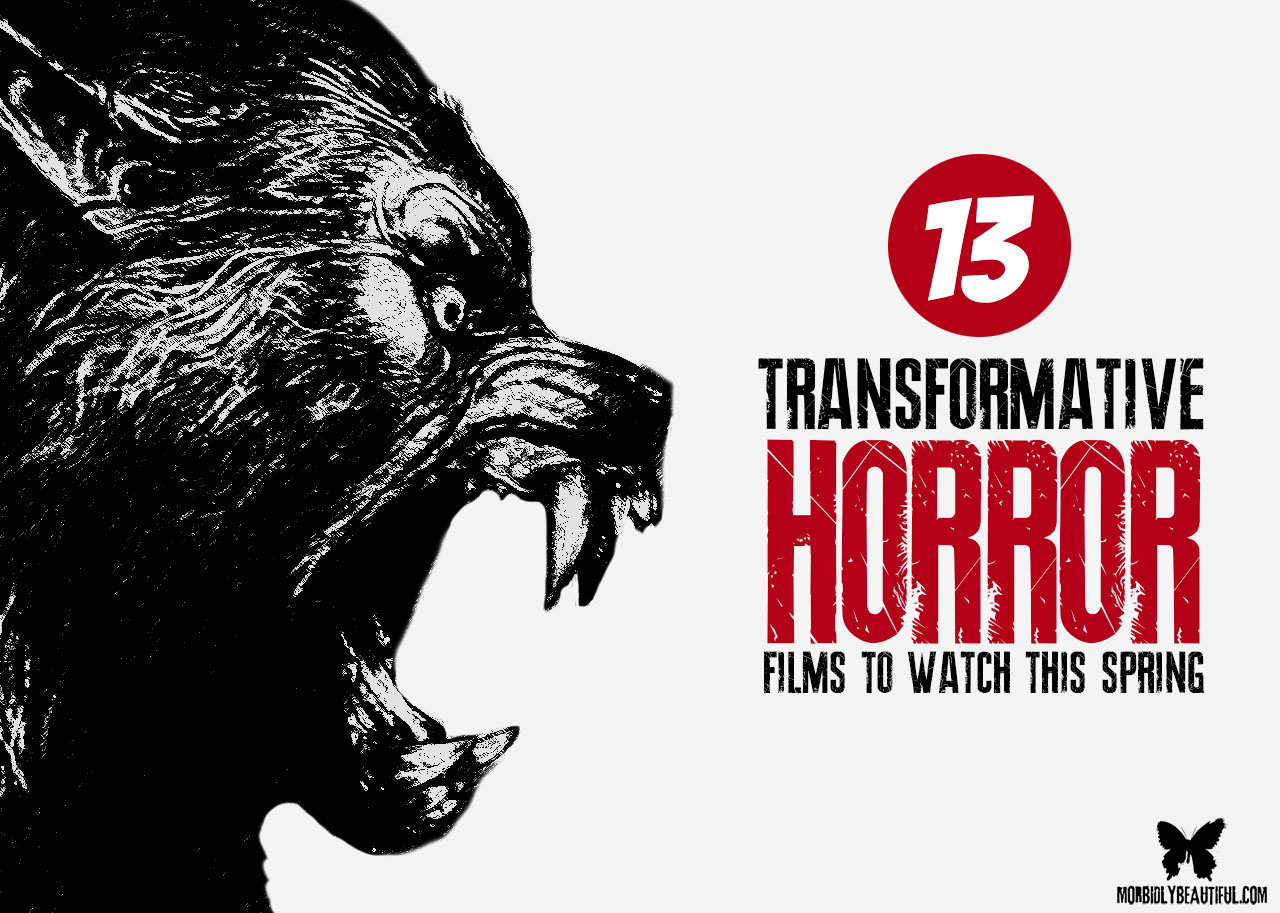

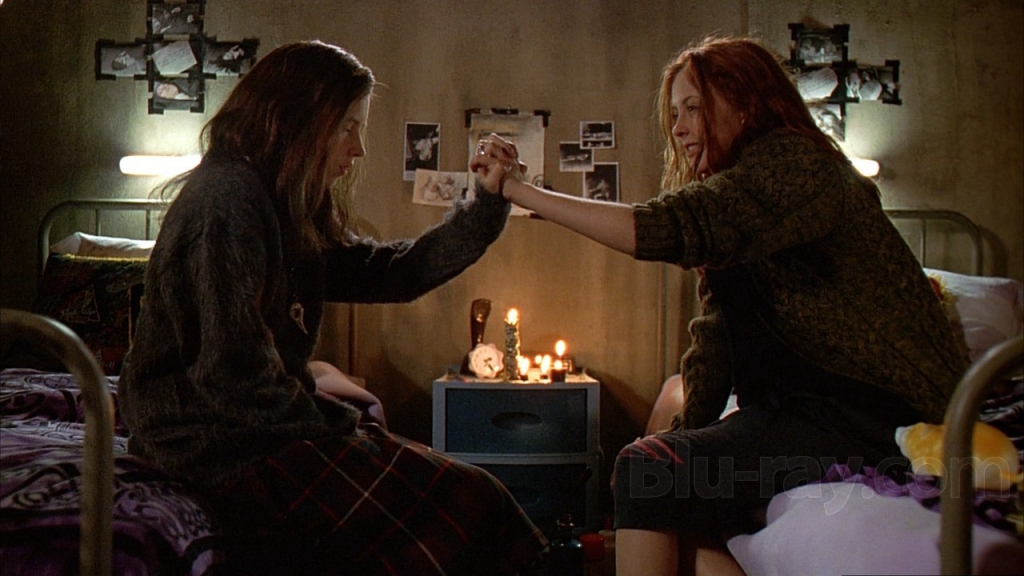

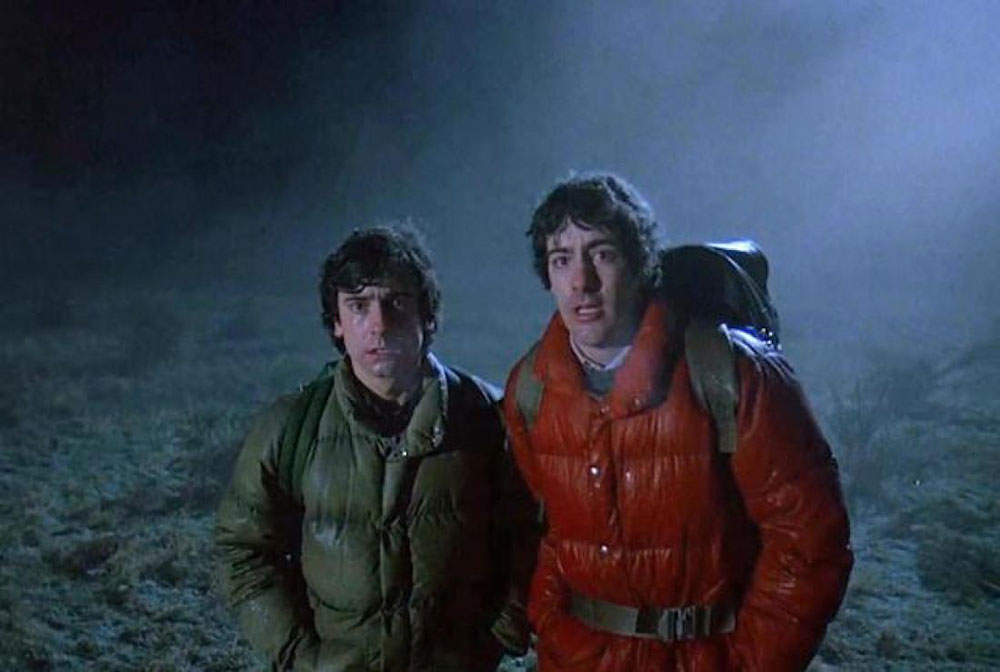

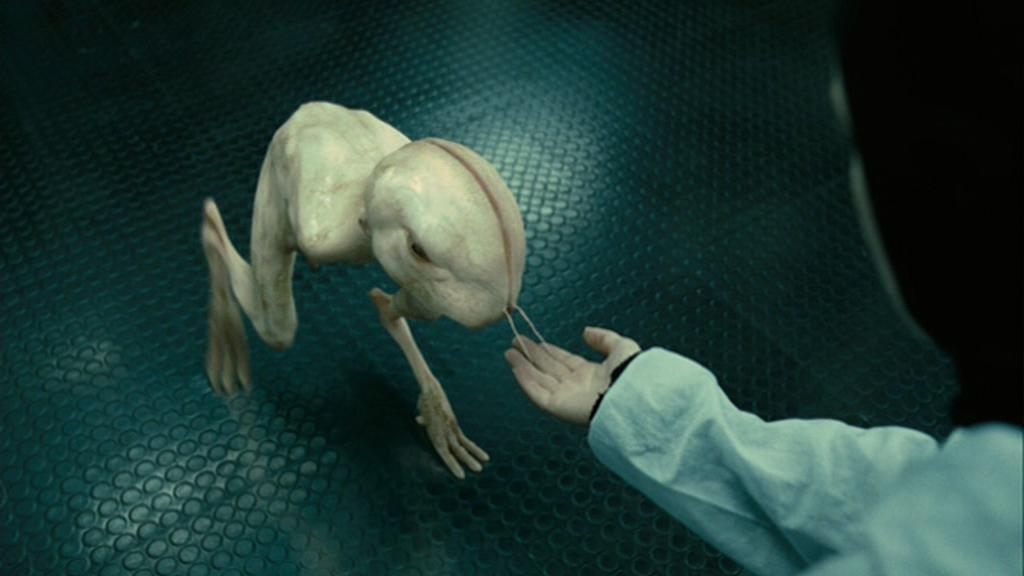
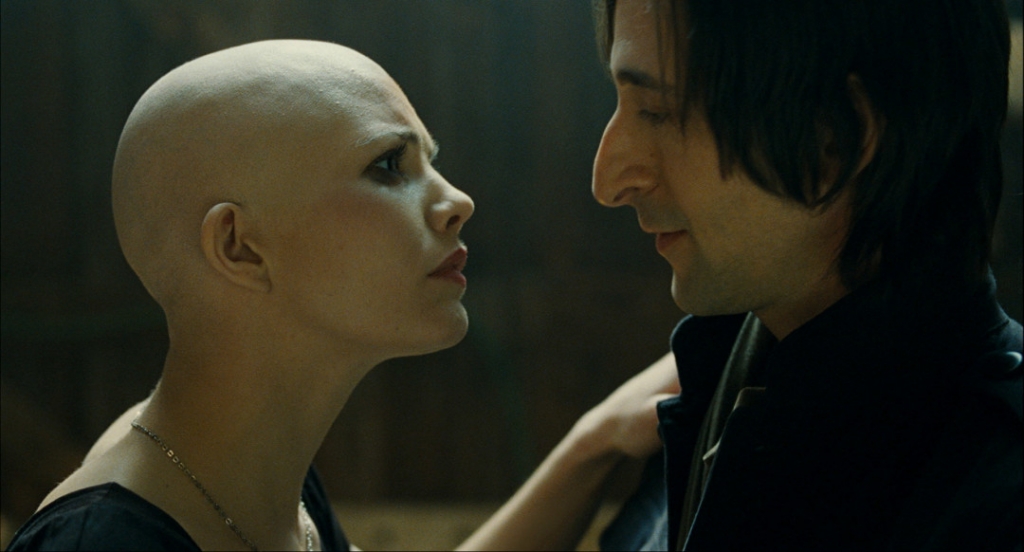
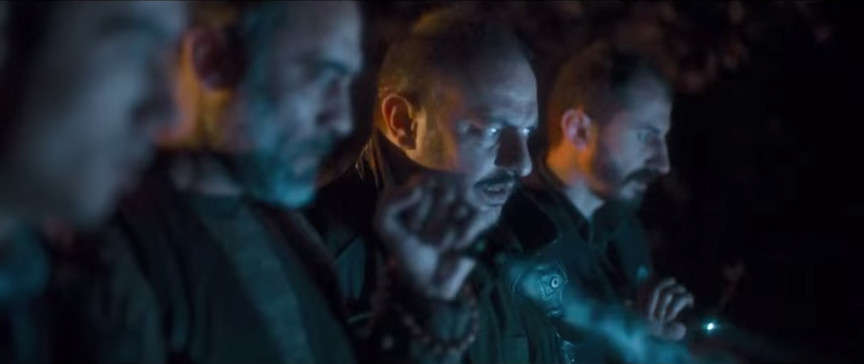
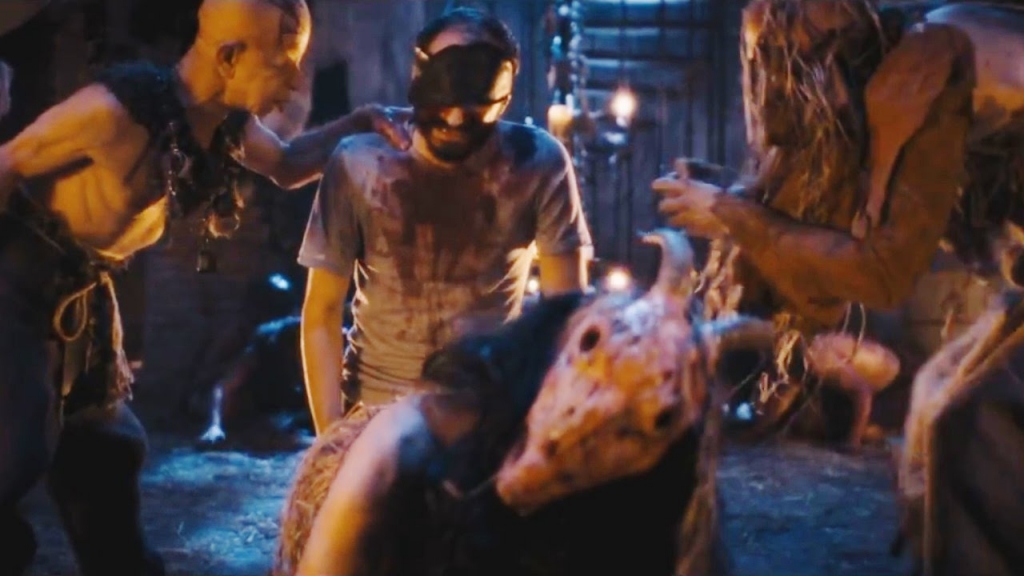
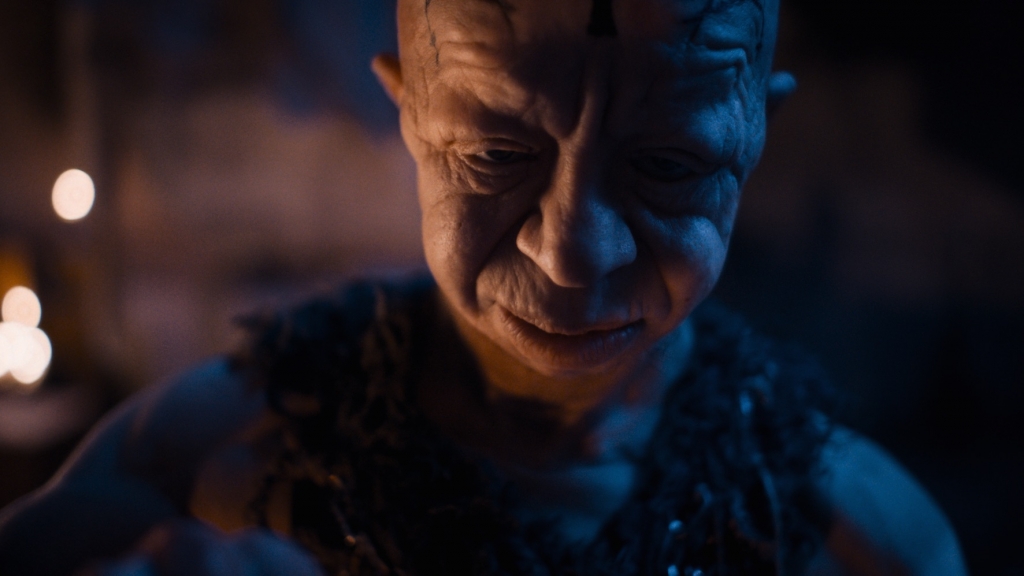
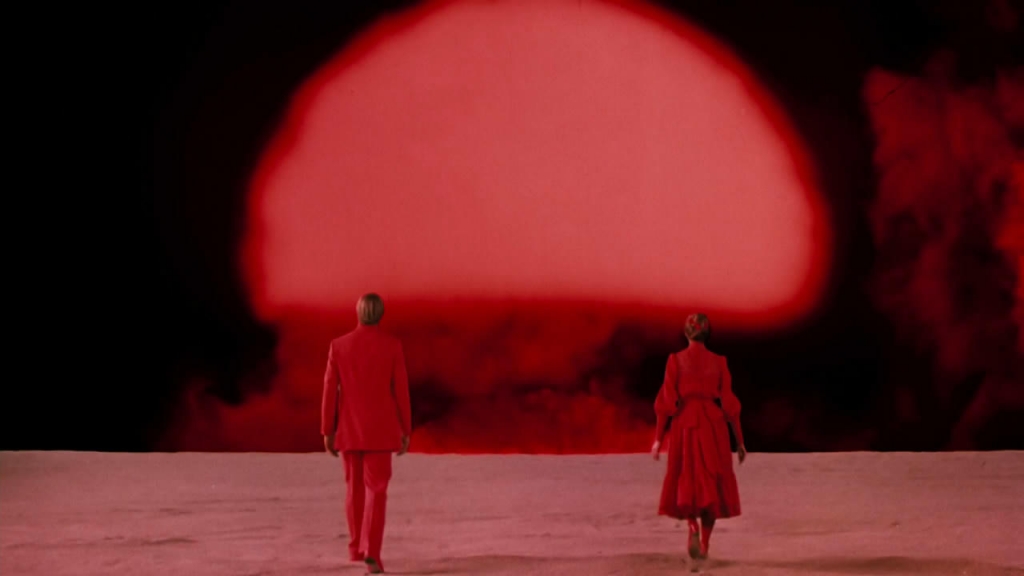
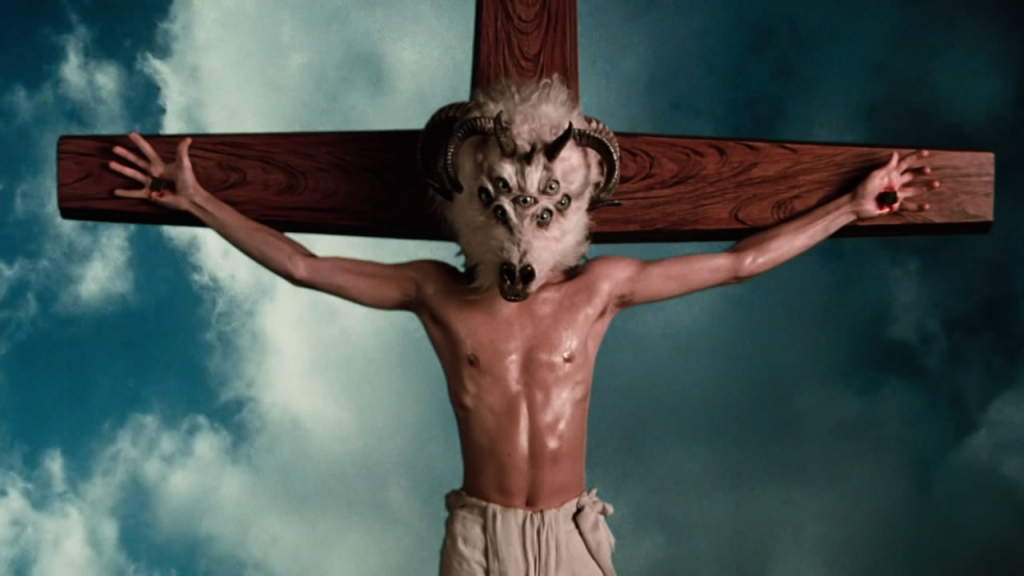
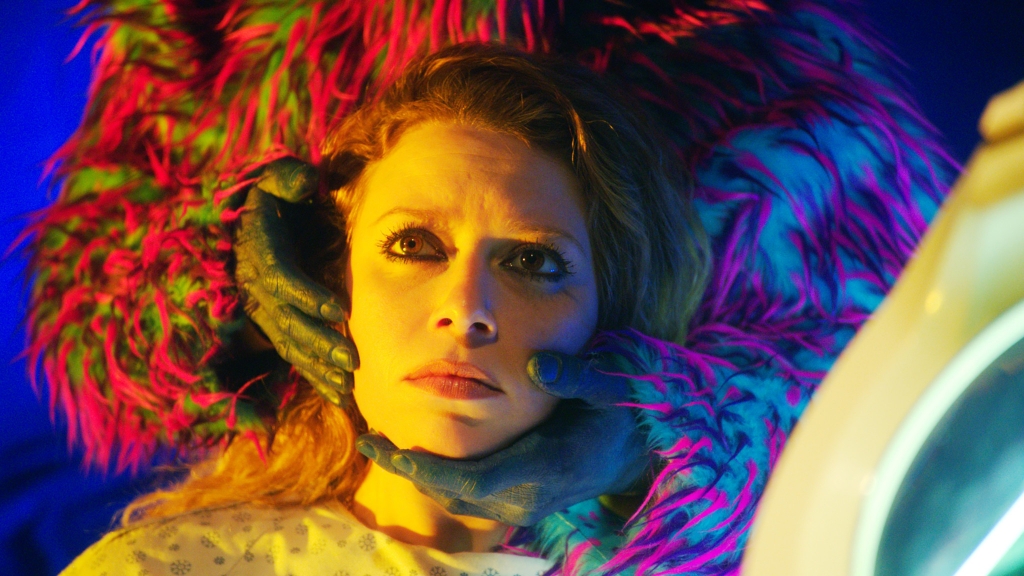
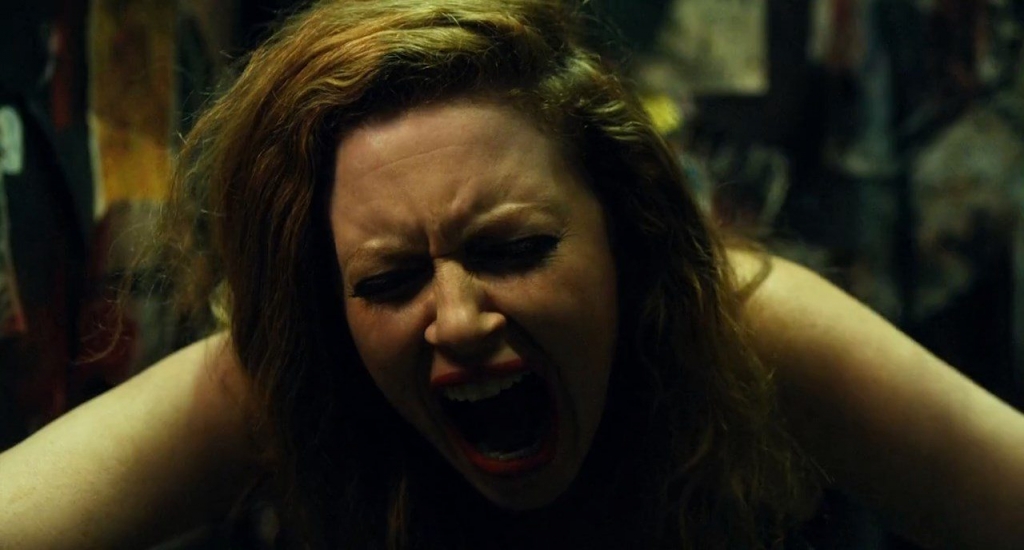
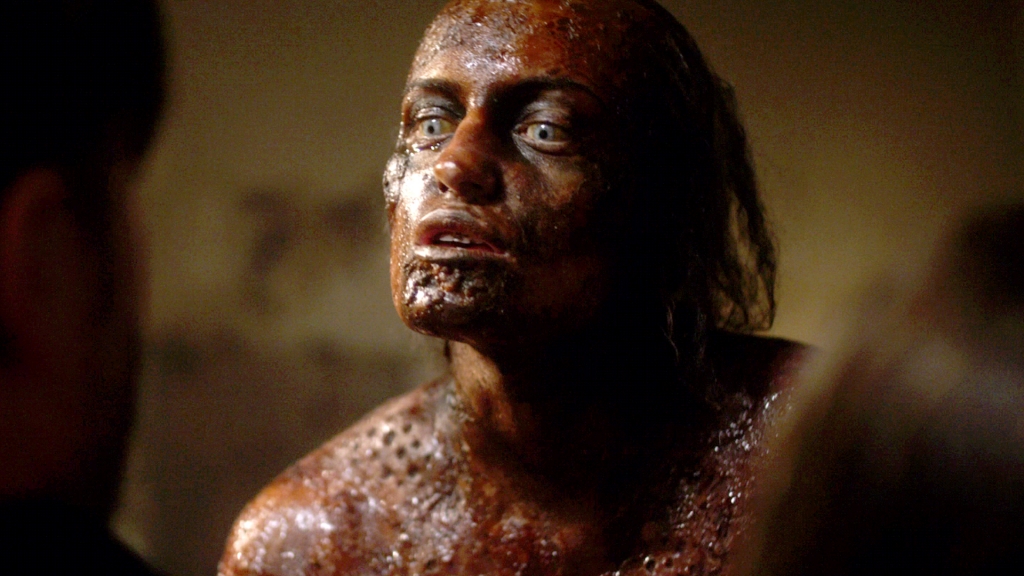
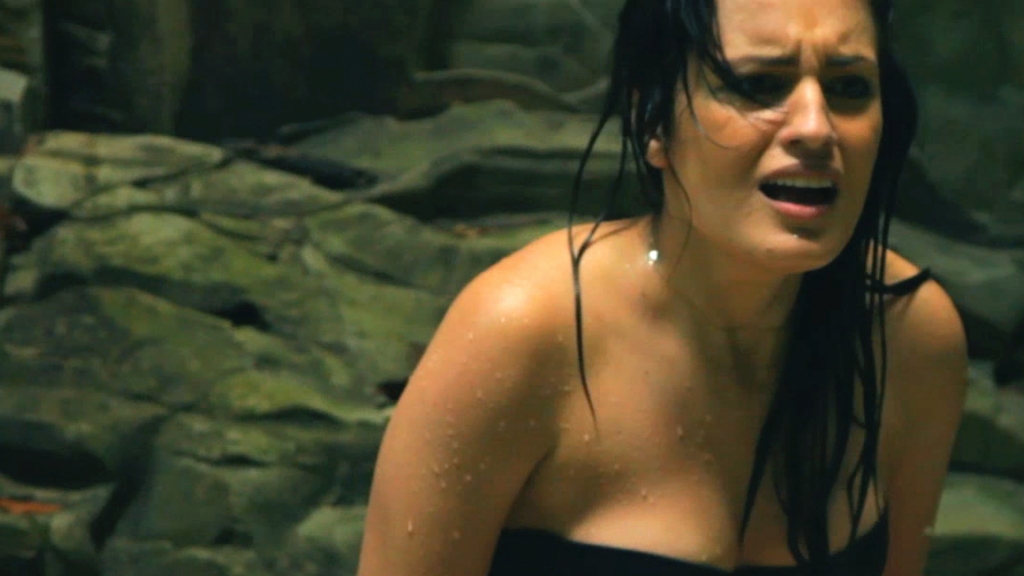

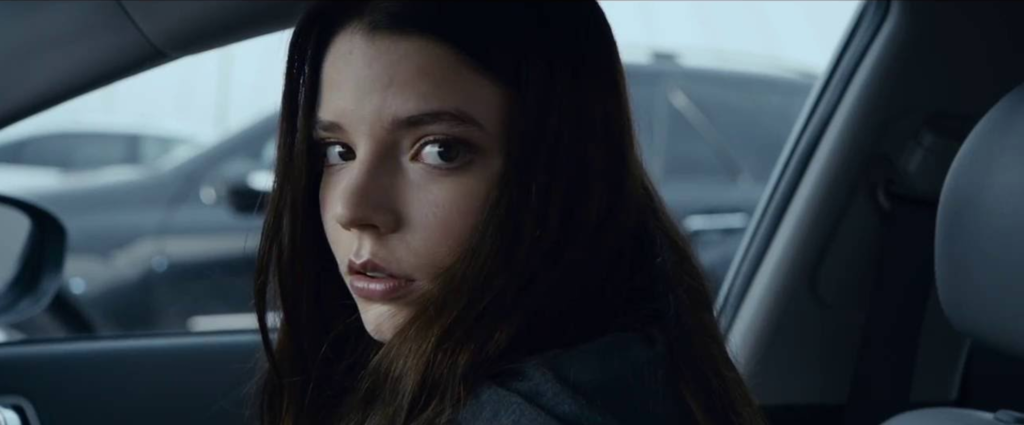
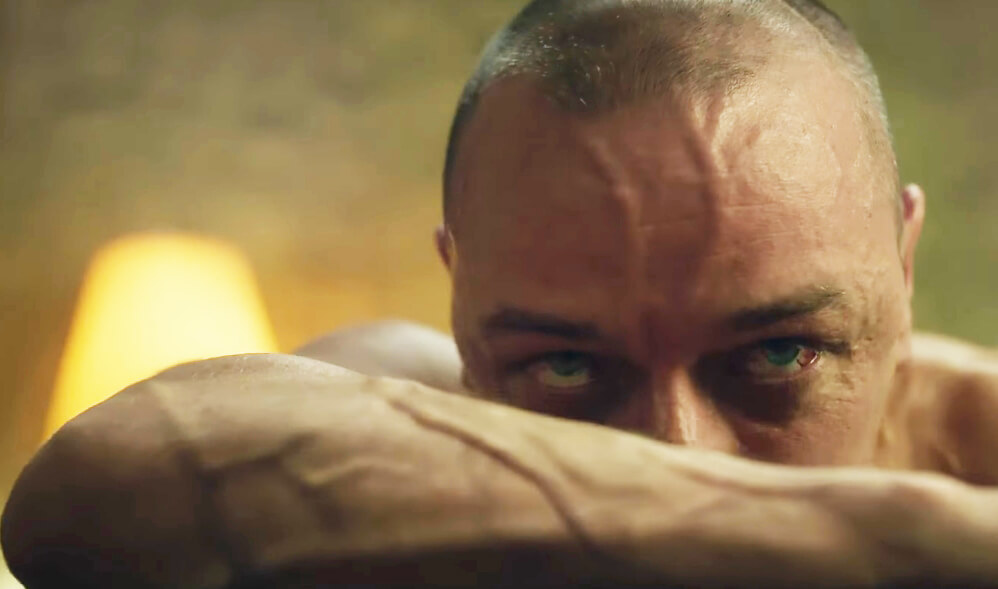
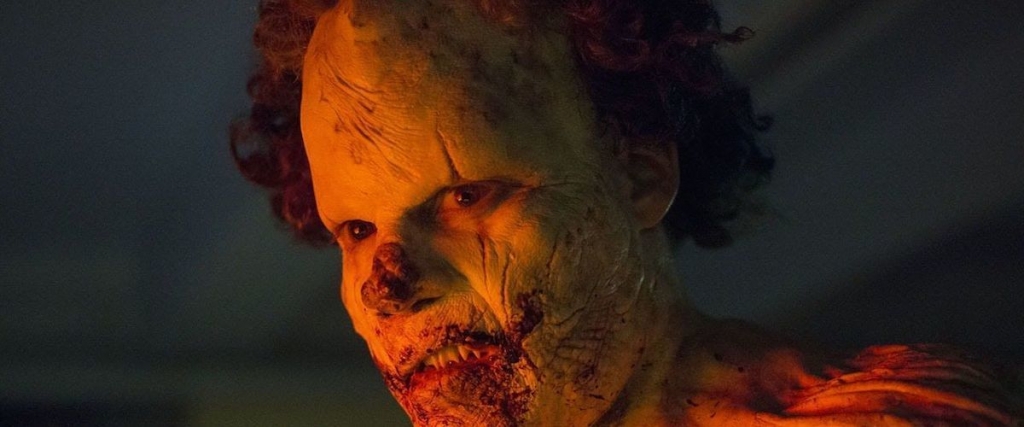

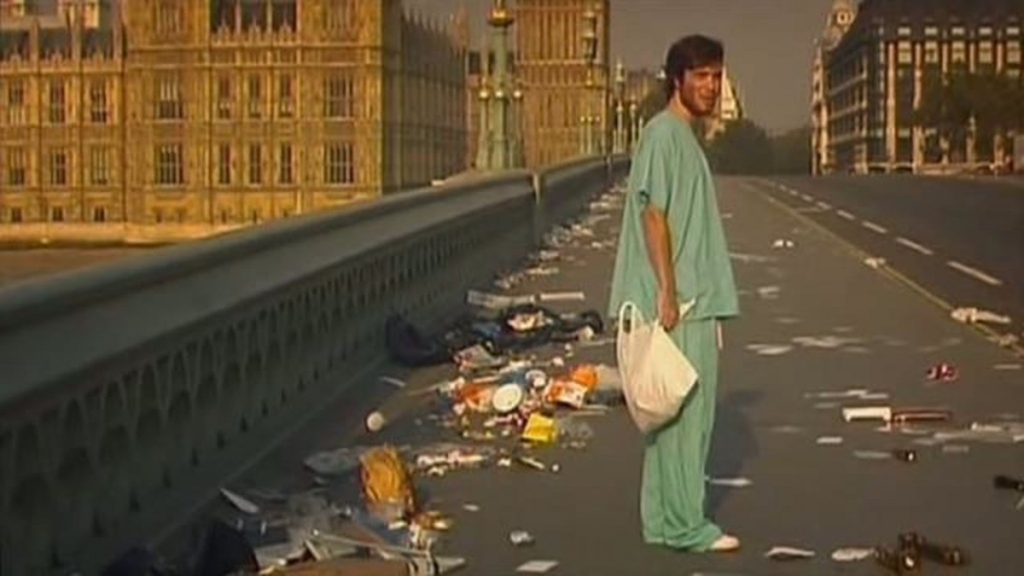
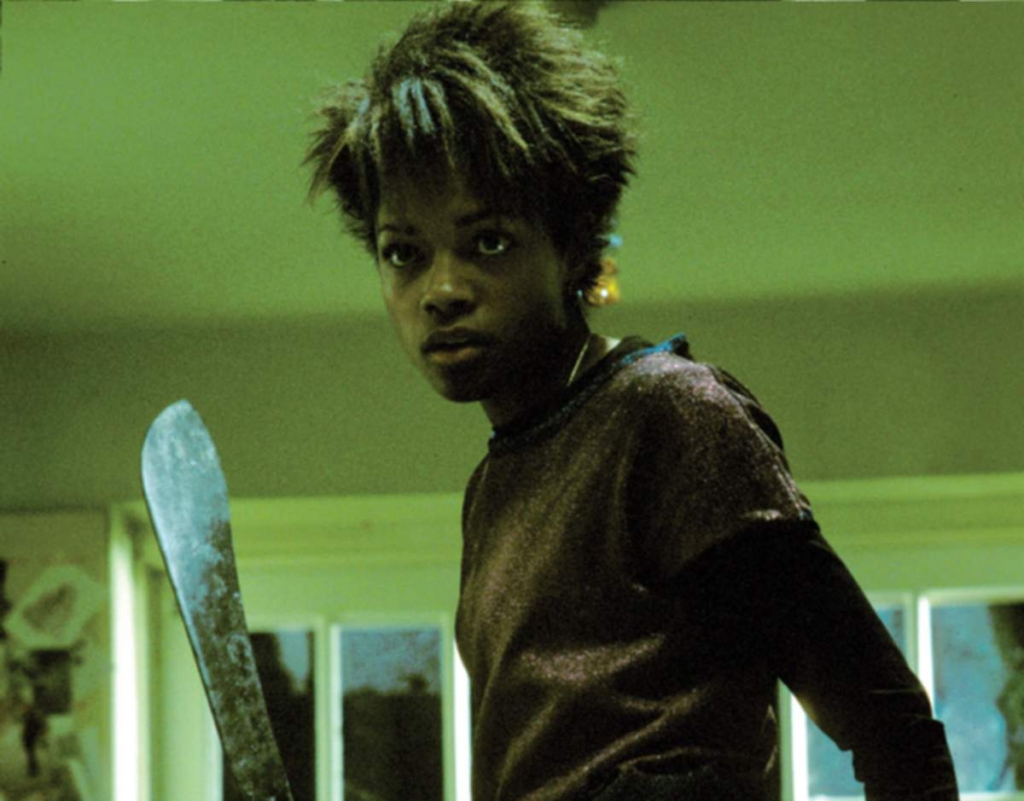
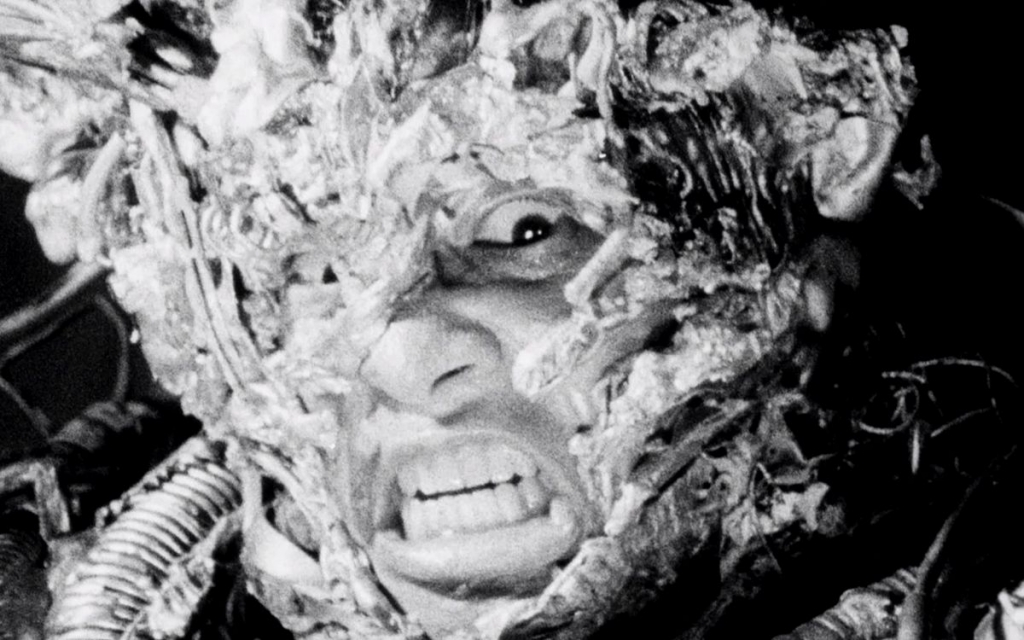

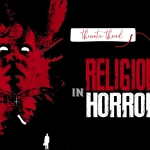
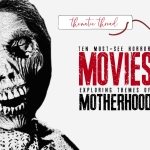










Follow Us!